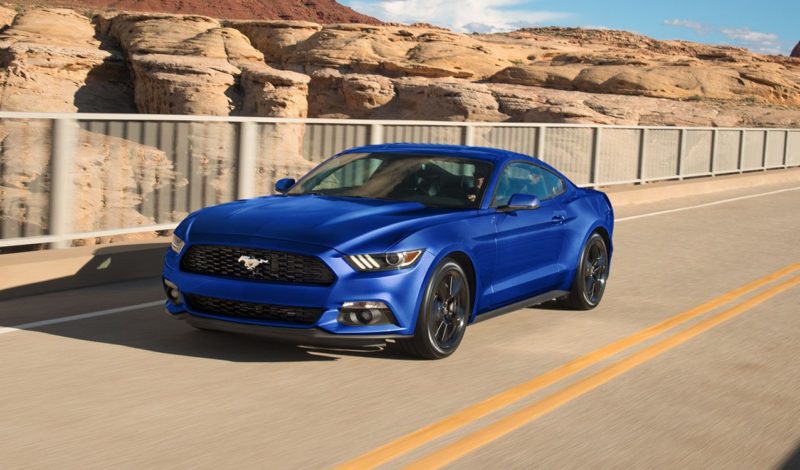Do the words “Four Cylinder Mustang” make you cringe? To some members of Generation Y, it seemed like sacrilege to build a Pony Car with half a V8, but Ford has made great achievements in four cylinder power. We spent a week with a new six-speed manual Mustang with the EcoBoost engine and it was nice to see American innovation is alive in Detroit. Three decades ago, Ford built a limited number of SVO edition Mustangs powered by a turbocharged 2.3 liter four cylinder. It was faster than the 5.0 liter GT, so the V8 department had it killed in 1986. It made for a nice prequel as the 2.3 liter is back again, now with more BOOST! We’re well acquainted with late model Mustangs thanks to Mr. Roush. Like Mr. Ford, he knows the power of advertising and allows us to keep a new Stage III in our showroom. Ed and I took turns between the Roush and the EcoBoost whilst keeping opinions to ourselves. For full disclosure, his daily driver is a pristine SN-95 with intake and exhaust.
Without seeing the window sticker we agreed it was a fun experience listening to the fake engine noise generated by the radio. Ford spent countless hours creating the active noise cancellation software that emits a fake engine soundtrack through the speakers. Once you discover the microphone on the headliner, the passenger can have fun by holding an earbud over the device. We both agreed that the interior was well appointed with Recaro seating and the premium SYNC infotainment system. On paper, it is 150 lbs lighter than a similarly equipped GT, but the relaxed sway bars and springs made it feel less composed on the street.
Driving a manual transmission turbocharged car has a unique set of rules to keep the engine in its power band. Automatics have the luxury of brake-boosting to launch with boost, but its tricky with 3 pedals. Gear shifts can also be tricky as a drop in engine speed can cause the wastegate to hang open. Try as we might, Ford actually programmed the turbo to shut down and ignition timing pulled during each shift. So throw your knowledge about speed shifting out the window. With each shift, the EcoBoost falls flat on its face until 3,000 rpm. At first I thought the parking brake was set, so I pulled over to rethink the situation. Realizing that boost only occurs in a limited window, I used fancy footwork to keep it between 3,000 and 4,500 rpm. As you approach 5 grand the party is over because the turbo is too small for such engine speeds. The vague clutch and notchy shifter are disappointing. If Roush can use Hurst shifters and a properly weighted clutch, why can’t Ford?
The only reason this car exists is fuel mileage. It is rated at 30 mpg on the highway in 6th gear. But since it has a 3.31 differential, anything past 4th gear will leave you struggling for power. A fully equipped EcoBoost is also more expensive than a bare bones GT, which we also found confusing. Sure the EcoBoost is a worthy successor to the SVO, but I don’t want to work this hard for a 14 second quarter-mile. A 3.73 differential along with a more reasonable price would make it a viable option, but until then the V6 or GT are our choices for daily driven Supercars.
